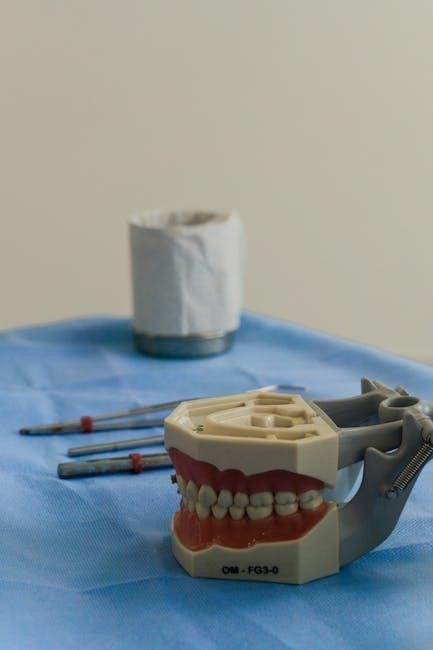Wheel alignment is the process of adjusting a vehicle’s wheel angles to ensure proper tire contact and even wear. It improves handling, fuel efficiency, and safety, making it a crucial maintenance task for optimal vehicle performance.
What is Wheel Alignment?
Wheel alignment is the process of adjusting a vehicle’s suspension system to ensure the wheels are set at the correct angles. Proper alignment means the tires are perpendicular to the road and parallel to each other. This ensures even tire wear, improves handling, and enhances fuel efficiency. Alignment involves adjusting camber, caster, and toe angles, which are critical for maintaining vehicle stability and performance. Regular alignment checks are essential for maintaining optimal driving conditions and extending tire life. Misaligned wheels can lead to uneven wear and reduced control, making alignment a key part of routine vehicle maintenance.
Why Proper Alignment is Important
Proper wheel alignment is essential for ensuring vehicle safety, performance, and longevity. Misaligned wheels can lead to uneven tire wear, reducing traction and increasing the risk of tire failure. Additionally, improper alignment can cause poor handling, decreased fuel efficiency, and increased wear on suspension components. Aligning wheels correctly enhances stability, improves steering response, and prolongs tire life. It also ensures even weight distribution, which is critical for maintaining control while driving. Regular alignment checks and adjustments are vital for maintaining optimal vehicle performance and safety on the road. Proper alignment also helps prevent premature wear on other vehicle systems, saving money and ensuring reliable operation over time.

Key Components of Wheel Alignment
Wheel alignment involves adjusting camber, caster, and toe angles to ensure proper tire orientation. These components work together to optimize vehicle stability, handling, and tire longevity.
Camber Angle
The camber angle refers to the tilt of a vehicle’s wheels from top to bottom when viewed directly from the front or rear. Proper camber ensures even tire wear by keeping the tires perpendicular to the road surface. Incorrect camber can lead to uneven wear, reduced handling, and decreased fuel efficiency; Adjustments are typically made by modifying the suspension components. Proper camber alignment is essential for maximizing tire life and maintaining vehicle stability.
Caster Angle
The caster angle measures the tilt of the steering axis relative to the vertical axis of the wheel. A positive caster angle improves stability and self-centering of the steering wheel, especially at higher speeds. It also enhances directional control and reduces wandering. Adjusting caster involves modifying suspension components like control arms or strut mounts. Proper caster alignment ensures smooth handling and responsiveness, making it a critical aspect of vehicle stability and driver comfort.
Toe Angle
The toe angle refers to the inward or outward tilt of the wheels when viewed from above. Proper toe alignment ensures even tire wear and stable handling. A “toe-in” alignment means the front of the tires is angled inward, while “toe-out” means they are angled outward. Incorrect toe alignment can lead to uneven tire wear and reduced fuel efficiency. Adjusting the toe involves modifying the tie rods, and precise measurements are critical for optimal performance. Proper toe alignment enhances vehicle stability and improves overall driving safety.

Tools and Equipment Needed for DIY Alignment
- E Essential tools: wrenches, sockets, pliers, jack stands, and wheel chocks.
- Alignment equipment: wheel alignment machine, laser tools, or alignment gauges.
- Additional items: measuring tape, string, and a level surface.
Essential Tools
For a successful DIY wheel alignment, you’ll need basic tools and equipment. Essential tools include a wrench, sockets, pliers, jack stands, and wheel chocks to ensure safety and stability. A torque wrench is also necessary for precise adjustments. Additional items like a measuring tape, string, and a level surface are crucial for accurate alignment measurements. Always ensure your tools are in good condition to avoid errors. A car manual, such as those from Haynes, can provide specific instructions and technical data for your vehicle. Proper tools ensure accuracy and safety during the process.
Alignment Equipment
Professional wheel alignment requires specialized equipment for precision. A wheel alignment machine or laser alignment tools are essential for measuring and adjusting angles accurately. Alignment gauges can also be used to check toe, camber, and caster angles. While DIY setups with strings or tape measures are possible, they are less precise. For optimal results, consider investing in a basic alignment kit or using a professional-grade machine. Proper equipment ensures accurate adjustments and prevents uneven tire wear or handling issues. Always follow manufacturer guidelines for the best outcomes.
DIY Wheel Alignment Procedure

Start with a pre-alignment inspection, ensuring the car is on a level surface and tire pressure is correct. Use string or tape measure for toe alignment, adjusting tie rods as needed for precise measurements and proper wheel angles.
Pre-Alignment Inspection
A pre-alignment inspection ensures your vehicle is ready for adjustment. Check tire pressure, matching the manufacturer’s specifications, and verify the car is on a level surface. Inspect suspension and steering components for damage or wear. Measure tire tread depth and look for uneven wear patterns. Ensure the steering wheel is centered and the vehicle rolls straight. Address any issues before proceeding with alignment for accurate results and optimal performance.
Step-by-Step Alignment Process
The step-by-step alignment process begins with setting the vehicle on a level surface and ensuring the steering wheel is centered. Measure the current toe, camber, and caster angles using specialized tools. Adjust the camber by modifying the suspension components, then fine-tune the caster for stability. Finally, set the toe by adjusting the tie rods, ensuring even tire wear and proper alignment. Double-check all measurements for accuracy before completing the process to ensure optimal vehicle performance and safety.
Using String or Tape Measure for Alignment
Using a string or tape measure for alignment is a cost-effective method to achieve proper wheel alignment. Start by setting the vehicle on a level surface with the steering wheel centered. Run a string along both sides of the vehicle, ensuring it is taut and aligned with the wheel centers. Measure the distance from the string to the front and rear of each rim to check toe alignment. Adjust the tie rods to ensure even measurements, making fine-tuned adjustments as needed. This method provides a practical DIY solution for maintaining accurate wheel alignment without specialized equipment.
Rear Wheel Alignment
Rear wheel alignment ensures proper tire angles and even wear. It involves adjusting camber, toe, and caster angles, typically requiring specialized tools or professional expertise for accuracy and safety.
Can Rear Wheels Be Aligned?

Rear wheels can indeed be aligned to ensure proper tire angles and even wear. While often overlooked, rear wheel alignment is crucial for maintaining stability and preventing uneven tire degradation. The process typically involves adjusting the toe angle, which is the direction the tires point relative to the vehicle’s centerline. For most vehicles, rear wheel alignment requires specialized tools or professional equipment, but some enthusiasts successfully perform it at home with basic tools like a tape measure or string. Proper alignment ensures optimal vehicle handling and extends tire life.
How to Align Rear Wheels

Adjusting Tie Rods for Alignment
Adjusting tie rods involves loosening the nut, measuring the toe angle with a tape measure, and turning the rod to achieve proper alignment. Tighten the nut securely after adjustments.
Understanding Tie Rods
Tie rods are critical components in a vehicle’s steering system, connecting the steering gear to the wheels. They play a key role in maintaining proper wheel alignment by adjusting the toe angle. Tie rods consist of an inner and outer end, with the outer end typically adjustable. When adjusting tie rods, it’s essential to ensure even adjustments on both sides to maintain straight steering and prevent uneven tire wear. Proper adjustment requires precise measurement and careful tightening to avoid misalignment issues.
Adjustment Procedure
Loosen the tie rod nuts slightly using a wrench or pliers. Turn the steering wheel to the left for the right tie rod or to the right for the left tie rod. Mark the tie rod end position before making adjustments. Tighten the nut after adjusting the tie rod by a quarter or full turn, depending on the needed correction. Straighten the steering wheel and recheck the wheel alignment. Repeat if necessary until the desired toe alignment is achieved. Always ensure the vehicle is on a level surface for accurate adjustments.

Reading a Wheel Alignment Report
A wheel alignment report provides detailed measurements of toe, camber, and caster angles. It compares current specs to manufacturer recommendations, helping identify misalignments and necessary adjustments for optimal performance.
Understanding the Report
A wheel alignment report details the current measurements of your vehicle’s toe, camber, and caster angles. It compares these values to the manufacturer’s specifications, highlighting any deviations. The report typically includes before-and-after alignment readings, showing adjustments made during the process. Color-coded indicators (green for within spec, red for out of spec) make it easy to identify issues. Understanding the report helps you verify the accuracy of the alignment and ensures your vehicle is properly tuned for optimal performance and tire longevity.
Interpreting Alignment Data
Interpreting alignment data involves analyzing the measurements provided in the report to ensure your vehicle’s wheels are set correctly. The data typically includes toe, camber, and caster angles, with readings for both front and rear wheels. Positive or negative values indicate deviations from the manufacturer’s specifications. For instance, a positive camber reading means the wheels lean outward, while a negative reading means they lean inward. Proper interpretation helps identify misalignments and guides necessary adjustments to achieve optimal vehicle performance and even tire wear.
